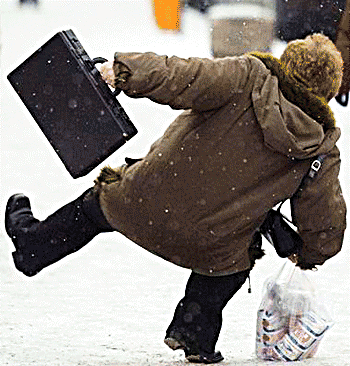

WINTER 2016
Volume I, Issue I

Academy of the Holy Angels
PROJECT SPOTLIGHT
The Academy of the Holy Angels is preparing to renovate its former convent building to house administrative and academic offices as well as to provide additional educational space for the school’s use. As a result, in preparation for these renovation activities, RJB Environmental, Inc. (RJB) was contracted to perform assessment activities of the former convent building. RJB was informed by the Building Department of the Academy that this 1965 constructed facility was innovative as it was one of the first facilities to employ the use of metal studding as a part of its interior construction. RJB’s assessment activities incorporated the sampling and assessment of suspect Asbestos Containing Materials (ACMs), the assessment of Universal Waste materials to include the sampling of the window and door caulk as well as the window glazing for Polychlorinated Biphenyls (PCBs).
Lastly, RJB performed an assessment of the facility relative to microbial impact issues as a result of the reported long term water incursion issues within the second floor as well as around the facilities windows. Receipt of the analytical data revealed that much of the facilities interior construction materials contained asbestos (i.e., sheetrock joint compound, plaster, ceiling tiles, floor tiles, stair treads and risers and window glazing). Additionally, the results of the window and door caulk revealed the presence of PCB’s.
Upon receipt of the aforementioned analytical data, RJB prepared a comprehensive assessment report outlining the findings of the assessment activities as well as recommendations with the associated construction cost estimates for the remediation of those materials that would be impacted by the renovations. In an attempt to keep the overall costs of the asbestos remediation lower, RJB composited a second set of Sheetrock and Joint Compound samples as a wall system in accordance with the EPA requirements versus the sheetrock and the joint compound separate in accordance with OSHA. This made the sheetrock wall system a non-regulated asbestos containing material with a result of <1% asbestos by weight and removed its abatement, an estimated six (6) week venture, from an occupied asbestos abatement project regulated under the State of New Jersey’s asbestos hazard abatement sub-code (N.J.A.C. 5:23-8) to a controlled demolition.

Avoiding Slips, Trips, and Falls in Winter Weather
Although we have experienced a mild winter thus far in the northeast, this latest winter weather has come with extremely icy and snowy conditions, and the incidence of injuries due to slips, trips and falls increases as a result. Suggestions to reduce the chances for slips, trips and falls and associated injuries are as follows:
1) Footwear – Wear appropriate footwear, slip resistant shoes/boots that have tread, textured grip on soles that increase traction with snow and ice.
2) Avoid slippery surfaces - Recognize that like tires on a vehicle, most all footwear will not prevent slips on icy surfaces. Wherever possible, bypass obvious slippery hazards such as ice.
3) Concentrate on the path ahead – Take your time, take small steps and look for changes in walking surfaces as many falls are caused where surface conditions change, uneven surfaces, patches of ice.
4) Balance – When walking, keep your hands out of pockets so that if you do slip, you can try and regain your balance with your arms. Try to keep your center of gravity over your front leg as you walk. Use handrails wherever possible.
5) Lighting - Since it gets dark early, try and follow lighted pathways wherever possible.
6) Entering /Exiting vehicles - keep at least one hand on the vehicle grab bar or door handle so you can catch yourself if you start to slip.
7) Look for water - Tracked in snow melts in high traffic areas such as entry foyers, halls and stairs that often cause slips and falls. Knock caked on snow/ice from footwear at entry mats where present.
8) Workplace Safety Program – Suggest that your company institute a comprehensive winter safety program to incorporate elements that are specific to your facilities.
9) If you slip - Initially try to regain balance, but relax if you fall and possibly prevent a twisting/bending injury. Try not to break your fall with your hands as this may break your wrist or elbow.
WINTERIZE YOUR HOME

Cover your AC unit with a tarp and some bungee cords to improve the life span of your system.

Conducting an annual engery audit of your home can save you money on your monthly heating bills..
Check all doors and windows for drafts and make an effort to seal them either using sealant on windows or
a draft stopper for your doors.

Unhook your hose and ensure that the water spicket is closed tightly. Ice build up in your hose can mean you will be buying a new one this Spring.
DID YOU KNOW ?
- A single snowstorm can drop 39 million tons of snow.
- While it seems counterintuitive, Earth is actually closest to the sun in December, even though winter solstice is the shortest day of the year.
- Around 12% of Earth’s land surface is covered in snow and ice.
- The coldest temperature ever recorded was -189° F at Vostok Station in Antarctica in 1983.
- ONLY 43 days until the first day of Spring! (March 20)
